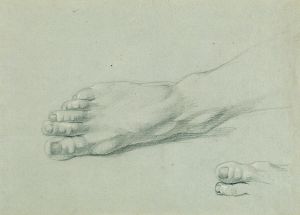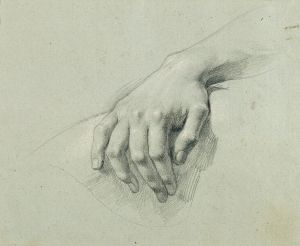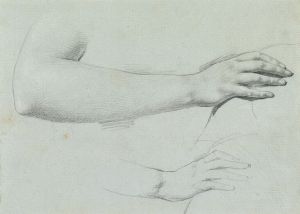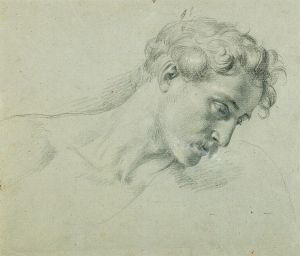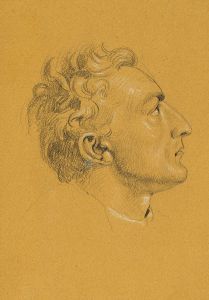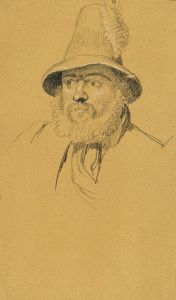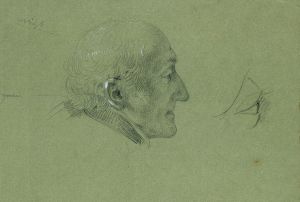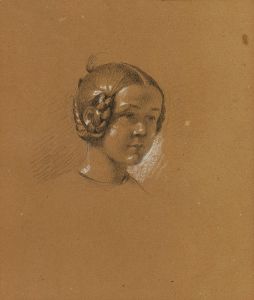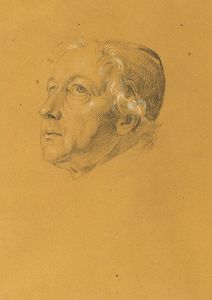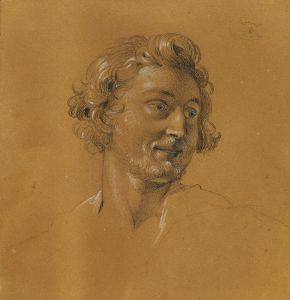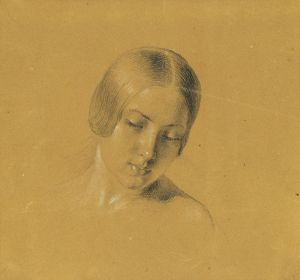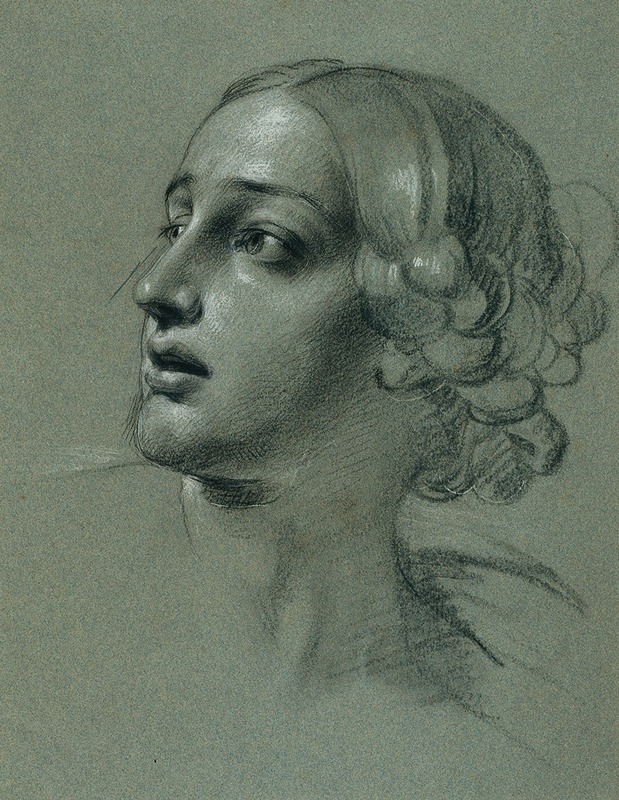
Kopfstudie zu ‘Arindal und Daura’
A hand-painted replica of Johann Peter Krafft’s masterpiece Kopfstudie zu ‘Arindal und Daura’, meticulously crafted by professional artists to capture the true essence of the original. Each piece is created with museum-quality canvas and rare mineral pigments, carefully painted by experienced artists with delicate brushstrokes and rich, layered colors to perfectly recreate the texture of the original artwork. Unlike machine-printed reproductions, this hand-painted version brings the painting to life, infused with the artist’s emotions and skill in every stroke. Whether for personal collection or home decoration, it instantly elevates the artistic atmosphere of any space.
Johann Peter Krafft was an Austrian painter known for his historical and genre paintings. One of his notable works is "Kopfstudie zu ‘Arindal und Daura’," which translates to "Head Study for 'Arindal and Daura'." This piece is a preparatory study, which suggests that it was part of Krafft's process in creating a larger, more comprehensive work.
Krafft was born on September 15, 1780, in Hanau, Germany, and later became a prominent figure in the Austrian art scene. He studied at the Academy of Fine Arts in Vienna and was influenced by the Neoclassical style, which was prevalent during his time. His works often depicted historical and mythological themes, reflecting the Romantic interest in such subjects.
"Kopfstudie zu ‘Arindal und Daura’" is a testament to Krafft's skill in capturing human expressions and emotions. The study focuses on the heads of the characters Arindal and Daura, who are figures from Ossianic poetry. Ossian, a legendary Gaelic bard, was a creation of the Scottish poet James Macpherson in the 18th century. Macpherson's works, which he claimed were translations of ancient Scottish Gaelic poems, became immensely popular across Europe and inspired many artists and writers of the Romantic period.
The choice of Arindal and Daura as subjects indicates Krafft's engagement with the Romantic fascination with the sublime and the heroic. These characters are often associated with themes of love, tragedy, and heroism, which were central to the Romantic ethos. Krafft's study likely aimed to explore these themes through the detailed depiction of the characters' facial expressions and features.
Krafft's technique in this study would have involved careful observation and rendering of the human form, a skill he honed through his academic training. The study would serve as a reference for the final composition, ensuring that the emotional intensity and narrative clarity were effectively conveyed in the completed work.
While "Kopfstudie zu ‘Arindal und Daura’" is a preparatory piece, it stands on its own as an example of Krafft's ability to convey complex emotions through portraiture. His attention to detail and his ability to capture the essence of his subjects are evident in this work, reflecting the broader artistic trends of his time.
Johann Peter Krafft continued to be an influential figure in the art world until his death on October 28, 1856, in Vienna. His works remain significant for their historical and cultural insights, as well as their artistic merit. "Kopfstudie zu ‘Arindal und Daura’" is a small but important part of his legacy, illustrating his contribution to the Romantic movement and his mastery of the human form.






